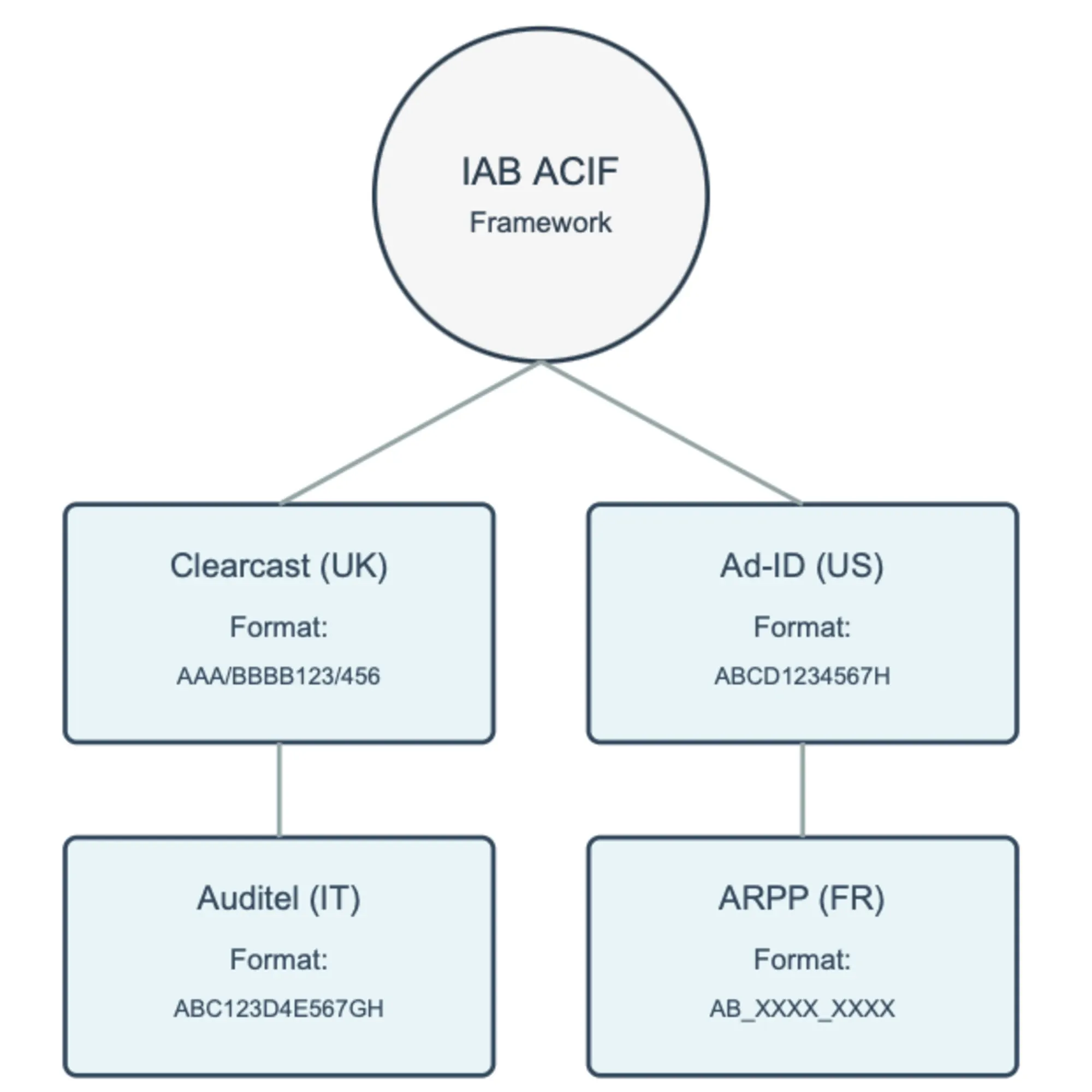Ad Creative ID Framework gains support from major ad registries
IAB's unified ad tracking system sees adoption from key industry players across Europe and United States.

As of January 21, 2025, the Interactive Advertising Bureau's (IAB) Ad Creative ID Framework (ACIF) has gained significant traction with the integration of major advertising registries across Europe and the United States. According to Adform's latest technical documentation, the framework now incorporates registered ad IDs from Auditel in Italy, Ad-id.org in the United States, ARPP in France, and Clearcast in the United Kingdom.

The standardization comes amid increasing complexity in video advertising delivery across Connected TV (CTV) platforms, streaming devices, and digital channels. According to the technical specifications, ACIF addresses fundamental challenges in cross-platform ad management by establishing unified identification protocols for video advertisements.
The implementation details reveal specific formatting requirements for each registry. Clearcast, serving the UK market, requires a structured format "AAA/BBBB123/456" where the first three letters represent an agency code. The US-based Ad-ID system implements a 12-character alphanumeric format, starting with four letters followed by seven or eight additional characters. Meanwhile, Italy's Auditel system employs a 14-character CUSV (Codice Unico Spot Video) format, and France's ARPP utilizes a 21-character system.
Technical specifications for video ad delivery have been standardized across platforms. The documentation specifies that video files must not exceed 100 MB, with recommended Full HD resolution (1080P) and bitrates ranging from 600 to 3000 kbps. Audio requirements stipulate stereo MP3 or ACC format with sampling rates of 48,000 Hz for standard use or 96,000 Hz for professional applications.
The framework addresses specific technical requirements for different video ad formats. For 16:9 aspect ratio, the recommended size is 1920x1080 pixels, with a minimum requirement of 640x360 pixels. For 4:3 format, specifications indicate 640x480 pixels, with a minimum of 480x360 pixels. H.264 codec is recommended when using MP4 format, with progressive scan and no interlacing for optimal web viewing.
Integration with existing ad serving technologies has been considered in the framework. The system supports Video Ad Serving Template (VAST) versions 2.0, 3.0, and 4.2, alongside Video Player Ad Interface Definition (VPAID) 2.0 for rich media capabilities. This compatibility ensures broad implementation across current ad serving infrastructure.
The framework introduces specific guidelines for different video ad types. In-stream linear video ads, including pre-roll, mid-roll, and post-roll formats, must provide skip functionality within six seconds for any content exceeding 31 seconds. Outstream video advertisements are required to initiate in silent mode, with sound activation requiring explicit user interaction.
Implementation of the framework carries certain technical restrictions. According to the documentation, registered ad IDs cannot be utilized for dynamic or rotator advertisements. Additionally, each unique registered ad ID is restricted to a single tag, and tags become immutable once submitted to inventory sources for approval.
The standardization effort aims to address several technical challenges in digital advertising. The framework facilitates frequency capping, competitive separation, cross-platform measurement, and creative reconciliation through standardized metadata handling and identification protocols.
This development represents a significant technical advancement in digital advertising infrastructure, particularly for broadcast and CTV platforms. The standardization of ad identification across major markets indicates a move toward more structured and measurable video advertising delivery systems.
The technical implementation began rolling out in January 2025, marking a coordinated effort across multiple national advertising bodies to standardize video ad identification and delivery. The framework's adoption by major registry providers suggests an industry-wide shift toward unified standards in digital video advertising.


